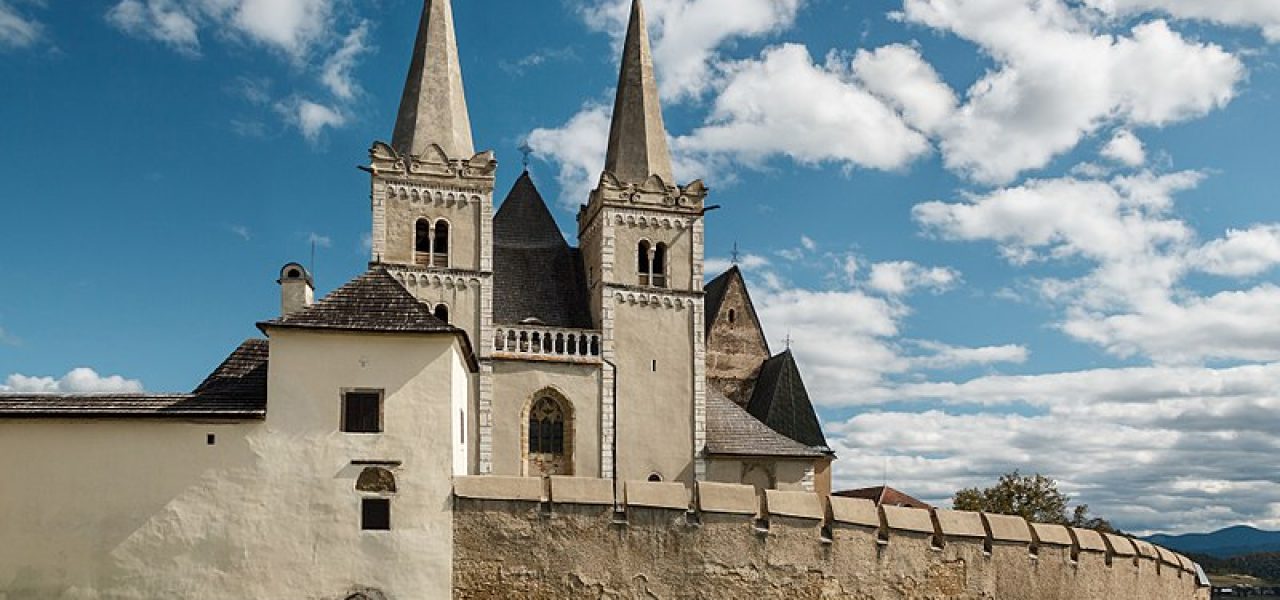INTRODUCTION
The most important building of Spišská Kapitula, which was along with other monuments in environs of the Spiš Castle inscribed in the UNESCO World Cultural and Natural Heritage, is the Late-Romanesque St Martins Cathedral.
Almost unique is the stone sculpture of Leo Albus from the second third of the 13th century. It is one of the oldest of its kind in Slovakia.
HISTORY
The construction of the church began in 1198, as a representative temple of the Spiš convent. The work was completed in the years 1245-1275, after the Tartar invasions and when the damages of it were repaired. In the years 1288 – 1289 subsequent damages caused the invasion of Cumans, and additional work on the expansion was carried out in the 14th century. In the second half of the 15th century, the church was transformed into a gothic style, among others, then the chancel was enlarged and from the south a mortuary chapel of the Zapolya family was added. In 1776, with the creation of the Spiš bishopric, the church was raised to the cathedral’s dignity and subjected to numerous late baroque alterations, which were later removed in 1873-1889.
Fortifications surround the church and small town. Their oldest fragment, dating back to the 14th century, is located on the west side, the others were erected in the 17th century and were adapted to powder guns.
ARCHITECTURE AND FURNITURE
The oldest Romanesque church was a three-nave pseudo basilica with two towers on the western side, a transept of equal height with the nave and chancel ended with a semicircular apse. The west facade was erected as a westwork (west-facing entrance section) with a representative inter-tower room equipped with its own stairs. A chapel was also placed in there for the royal family.
During the destruction caused by the Tatar invasion, the south tower was rebuilt afterwards, supplied with two small arrowslits. The westwork was dismantled and transformed into a matroneum (an inner gallery). On the ground floor, the gallery was covered by six fields of rib vaults, supported by segmented pillars, two of which also carried the inner corners of the towers. Their presence on the ground floor was practically invisible. The towers had full, internal walls only on the level of the first floor. The impressive, large matroneum which is almost 100 m2 wide, openness to the nave with a wide arcade.
In the 14th century, to increase the capacity of the nave two chapels were added between the eastern wall of the transept and the north and south walls of the nave. These changes must have been accompanied by the transformation of the entire building’s roof.
The great gothic reconstruction of 1462-1478 caused the removal of the eastern apse, replaced by a polygonal ended chancel. The space of the church was also unified by demolishing the eastern walls of the transept, as well as the walls between the central nave and the side chapels. Finally, the Romanesque Pseudobasilica changed into a hall church, consisting of a three-nave corpus, preceded from the west by a two-tower facade and a gothic chancel ending on three sides. Only the western part of the church has a Romanesque form, covered with a groin vault, with a choir supported by huge pillars and a semicircular main portal. The west facade is divided by arcaded friezes, and in the four-sided towers, covered with pyramidal helmets, a Romanesque biforia is placed. The remaining parts of the church are gothic. The massive chancel is surrounded from the outside by buttresses, between which there are pointed windows with traceries. The whole church is covered with a joint gable roof.
On the south side, the late gothic Zapolya Chapel was added to the church. It was built on a rectangular plan with four bays, ended on three sides, with a vestibule from the west and covered with a high gable roof. It has a relatively rich architectural detail from the outside, the windows are filled with traceries, and the buttresses are topped with pinnacles.
After entering the church, attention is drawn to the stone, late-Romanesque sculpture of the Lion from the second half of the 13th century. In the chancel is set the main altar of St. Martin, composed of Gothic fragments from 1470-1478. Other Gothic, wooden altars are located in the side aisles. The church has also preserved fragments of a Gothic polychrome from 1317 depicting a scene from the coronation of Hungarian king Charles I.
OPENING HOURS
January – April
Tuesday – Friday: 11:00 – 15:00
May – October
Monday – Saturday: 10:00 – 16:00
Sunday: 13:00 – 16:00
November – December
Tuesday – Friday: 11:00 – 15:00
CONTACT
Mariánske námestie č. 34
053 04 Spišské Podhradie
Phone: +421 (0) 53/469 90 78
E-mail: tic.spisskepodhradie@gmail.com
Website: www.spisskepodhradie.sk
ENTRANCE FEES & GUIDED TOURS
Adults: od 2 €
Reduced admission fee: od 1 €
Guided Tours on request.
ROUTE SUGGESTIONS
TOURIST INFORMATION OFFICE
Spišské Podhradie Tourist Information Centre
Mariánske námestie č. 34
053 04 Spišské Podhradie
Phone: +421 (0) 53/469 90 78
E-mail: tic.spisskepodhradie@gmail.com
Website: www.spisskepodhradie.sk


